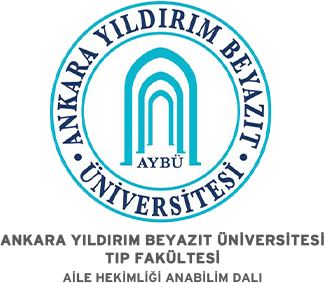Kadınların korku dolu deneyimi: mastalji
Servet Kocaoz1, OMER PARLAK21Ankara Şehir Hastanesi, Genel Cerrahi Ana bilim Dalı, Bilkent, Ankara, Türkiye.2Yıldırım Beyazıt Üniversitesi Tıp Fakültesi, Genel Cerrahi Ana bilim Dalı, Ankara, Türkiye.
GİRİŞ ve AMAÇ: Mastalji en sık görülen meme yakınmasıdır. Bu çalışmanın amacı meme ağrısına neden olan faktörleri araştırmaktır.
YÖNTEM ve GEREÇLER: Atatürk Eğitim ve Araştırma Hastanesi cerrahi polikliniğine meme rahatsızlığı veya diğer şikayetler ile başvuran 18-65 yaşları arasında 159'u meme ağrısı olan ve 159'u meme ağrısı olmayan toplam 318 kadın 1 Aralık 2018 ve 31 Ocak 2019 tarihleri arasında çalışmaya dahil edildi. Bu hastalara meme ağrısına neden olduğu düşünülen faktörleri içeren bir değerlendirme anket uygulandı.
BULGULAR: Meme ağrısı 50 yaş ve üstü hastalarda anlamlı olarak daha yüksek bulundu (OR = 3.496,% 95 CI: 3.496-11.056). Emziren kadınların emzirmeyen kadınlardan yaklaşık 3 kat daha fazla mastaljisi olduğu belirlendi (OR = 2.667,% 95 CI: 1.262-5.637). Mastalji prevalansının sigara içenlerde sigara içmeyenlere göre 2,5 kat daha yüksek olduğu belirlendi (OR = 2.466,% 95 CI: 1.306-4.659). Alkol kullanan kadınlarda mastaljinin içmeyenlere göre 4,5 kat daha fazla olduğu görüldü (OR = 4.456,% 95 CI: 1.394-14.244). Kilo alan kadınlarda mastalji gelişme olasılığının kilo almayanlara göre yaklaşık 2,5 kat daha fazla olduğu belirlendi (OR = 2.593,% 95 CI: 1.396-4.818). Ayrıca mastaljinin diğer benign meme rahatsızlıkları olan hastalarda 21 kat daha fazla geliştiği bulundu (OR = 20.996,% 95 CI: 10.344-42.620).
TARTIŞMA ve SONUÇ: Bu çalışmada mastaljinin 50 yaş ve üstü kadınlarda daha sık görüldüğü, emzirme, iyi huylu meme hastalığı, sigara ve alkol tüketimi ve kilo almanın mastaljiye neden olan risk faktörleri olduğu ortaya konuldu.
Fearful experience of women: mastalgia
Servet Kocaoz1, OMER PARLAK21Department of General Surgery, Ankara City Hospital, Bilkent, Ankara, Turkey.2Department of General Surgery, Faculty of Medicine, Ankara Yıldırım Beyazıt University, Bilkent, Ankara, Turkey.
INTRODUCTION: Mastalgia is the most common breast complaint. The aim of this study is to investigate the factors that cause breast pain.
METHODS: A total of 318 women between the ages of 18 to 65 with 159 having breast pain and 159 without breast pain who applied to the surgery outpatient clinic of Atatürk Training and Research Hospital with breast discomfort or other complaints December 1, 2018, and January 31, 2019, were included in the study. An assessment questionnaire including the factors thought to cause breast pain was applied to these patients.
RESULTS: Breast pain was found to be significantly higher in patients aged 50 years and older (OR=3.496, 95% CI: 3.496-11.056). It was determined that breastfeeding women approximately 3 times more mastalgia than non-breastfeeding women (OR=2.667, 95% CI: 1.262-5.637). It was determined that the prevalence of mastalgia was 2.5 times higher in smokers than in non-smokers (OR=2.466, 95% CI: 1.306-4.659). It was found than mastalgia was 4.5 times higher in women that drink alcohol than in non-drinkers (OR=4.456, 95% CI: 1.394-14.244). It was determined that women who gained weight were approximately 2.5 times more likely to develop mastalgia than those without weight gain (OR=2.593, 95% CI: 1.396-4.818). It was also found that mastalgia is 21-fold more likely to develop in patients with other benign breast discomforts (OR=20.996, 95% CI: 10.344-42.620).
DISCUSSION AND CONCLUSION: This study revealed that mastalgia was more common in women aged 50 years and older, breastfeeding, the presence of benign breast disease, cigarette, and alcohol consumption, and gaining weight are risk factors causing mastalgia.
Sorumlu Yazar: Servet Kocaoz, Türkiye
Makale Dili: İngilizce
(670 kere indirildi)





